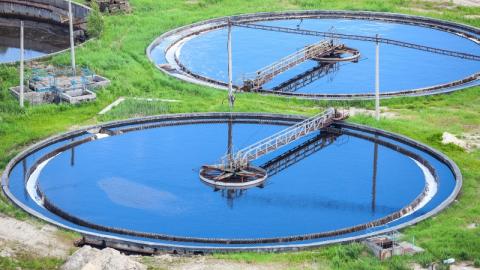To support the financial sector in meeting the sustainable investments targets that will lead Europe to carbon neutrality by 2050, the European Commission introduced a new common classification system at the international level for sustainable companies, the EU Taxonomy. The Regulation is the main instrument with which investors will integrate their investment process with decisions based on sustainability. So, an effective inclusion of a given industry within the Taxonomy can already represent an important lever for its competitiveness and its contribution to the sustainable transition.

Can you define the EU Taxonomy in a few words?
The EU Taxonomy – Regulation 2020/852 – is the first international classification system established by the European Commission that defines which economic activities can be defined as sustainable. The objective is to increase transparency and the quality of the information available for investors so to allow them to make effective sustainable investment decisions.
In practice, the EU Taxonomy is a list of the economic activities that can give a contribution to the achievement of 6 environmental objectives: climate change mitigation, climate change adaptation, sustainable use and protection of water and marine resources, transition to a circular economy, pollution prevention and control, and protection and restoration of biodiversity and ecosystems.
According to the Regulation, an economic activity can be defined “sustainable” if it can:
• prove the substantial contribution to at least one of the 6 environmental objectives through the technical criteria set by the Regulation;
• do no significant harm (DNSH) to any of the other environmental objectives, again, meeting the technical thresholds and regulatory requirements defined by the Taxonomy;
• guarantee the respect of minimal social safeguards that today mainly consist in complying with international principles on human right and work conditions.
Does the Taxonomy already include economic activities that may interest the irrigation industry? If, so, which ones?
As of today, the European Commission has adopted only the activities that can bring a substantial contribution to the first 2 climate objectives, mitigation and adaptation (EU Climate Delegated Act, March 2021). So, not all potentially sustainable economic activities have been classified in the current Taxonomy. From a preliminary analysis of the Climate Delegated Act and of the Draft Report on the remaining 4 objectives (Platform on Sustainable Finance, November 2022), the economic activities carried out by the irrigation industry are today only partially covered by the Taxonomy and mostly indirectly through more general activities about manufacturing, utilities, infrastructure and mobility. Looking at the Draft Report on the remaining 4 objectives, that aim at preserving water and biodiversity, originally due in 2022 but now expected to be adopted in 2023, the irrigation industry should be better represented in the EU Taxonomy in the future.
How can the Taxonomy be adapted in order to include the irrigation industry?
As mentioned, in 2023, the European Commission is likely to adopt the Delegated Act defining activities and criteria that can bring a substantial contribution to the remaining 4 objectives. So, considering the Delegated Act under definition, the irrigation sector must ensure it will be rightly represented so as to attract investments and avoid being excluded from the targets of Sustainable Finance. One way to raise the case of the irrigation is to show Institutions its current coverage and advocate for a better representation of the industry in the EU Taxonomy, from hardware manufacturing to practices in the field, in line with their positive contribution to the environment.
In this context, it is important to keep in mind in that, in the future, the Regulation aims to define an Extended Taxonomy that will cover the whole investible universe of economic activities based on a “traffic light” classification system: green activities that can bring a substantial contribution to at least 1 of the 6 objectives, not harming the environment; yellow activities that do not bring a contribution to any objective but at the same time do not harm the environment; red activities that are not sustainable and may need urgent phase-out.
You said that in order to be “sustainable” according to the Taxonomy, companies have to contribute to at least 1 of the 6 objectives. Is it enough to make a sustainable company?
To be “eligible” to EU Taxonomy, a company must find a correspondence of its business activities with those defined in the Regulation. Yet, to be considered “sustainable”, the company’s activities must, also only in part, be “aligned” to the EU Taxonomy by meeting the 3 conditions explained before.
The alignment is not always enough to declare that a company is fully sustainable. For instance, a company may be aligned to the Taxonomy for one of the many activities it may conduct, while all other activities can be not aligned. Perhaps, only very high percentages of alignment, both in terms of revenues and investments, can point to a sustainable company; a smaller percentage can only indicate that a company conducts part of its business in a sustainable way.
The nature of the resulting 3 KPIs shows how much the EU Taxonomy is thought to support investors in making sustainable investment choices. In fact, revenues and Opex show how much a company’s assets are sustainable today, whereas the share of CapEx shows how much a company is investing in making its business more sustainable tomorrow. Ultimately, while it is not mandatory for companies to reach a defined share of alignment to the EU Taxonomy, the Regulation and its criteria provide a motivation for companies to strive to reach a level of environmental performance that financial markets recognize as green.
If a company wants to apply the Taxonomy, what are the steps concretely?
To apply the EU Taxonomy, a company needs, first of all, the support of its technical figures to verify the activities and their screening criteria, along with the contribution of the financial functions to calculate the economic KPIs to be disclosed.
The application process follows 5 steps: 1) finding eligible economic activities from the list identified by the EU Taxonomy; 2) verifying the contribution to 1 of the 6 objectives through technical thresholds; 3) verifying the requirements for the DNSH criteria; 4) ensuring the respect of minimum social safeguards; 5) calculating the share of KPIs associated with the aligned activities. It’s important to consider that the verification of technical criteria may imply non only to measure the company’s environmental performance but also the one of the organizations along its supply chain.
What are the benefits for a company to apply the EU Taxonomy?
Companies that disclose to the financial markets whether or not they have Taxonomy-aligned activities allow investors to access this information and make investment decisions accordingly. Companies with Taxonomy-aligned activities will benefit from institutional investors, retail investors and banks interested in green investments. Investors will also look for Taxonomy-aligned economic activities as these are defined according to a common science-based system.
Additionally, institutional investors can, and in some cases will have to, design their investment strategies to only fund Taxonomy aligned activities (EU Sustainable Finance Disclosure Regulation 2019/2088). Large banks also have an incentive to finance Taxonomy-aligned businesses, for example through lending. So, a company applying for a bank loan may achieve a better interest rate if the purpose of the loan is to reach Taxonomy alignment of an activity or fund Taxonomy-aligned activities.
Finally, retail investors are increasingly interested in green products. Those providing investment services need to consider the client’s sustainability preferences as well as their risk profile. Financial consultants taking into account sustainability preferences in financial products create better opportunities for companies with Taxonomy-aligned activities to reach retail investors.
When and which companies will be obliged to respect the EU Taxonomy?
As of January 1st 2022, companies falling under NFRD in Europe are obliged to disclose their eligibility and alignment to the Taxonomy Regulation in terms of revenues, CapEx and OpEx. From 2026, on reporting year 2025, the application of the Regulation will extend to all companies in Europe that meet at least 2 of the following 3 requirements: > €40 million revenues, > €20 million on their balance sheet and > 250 employees. This perimeter is defined by the future Corporate Sustainability Reporting Directive (CSRD) which aims to broaden the scope of information on companies' sustainability performance in Europe. Such Directive will bring 11,000 companies, subject today to the NFRD, to 50,000 in 2025 to measure themselves against the EU Taxonomy.

Francisco Dubini, the Ambrosetti House

